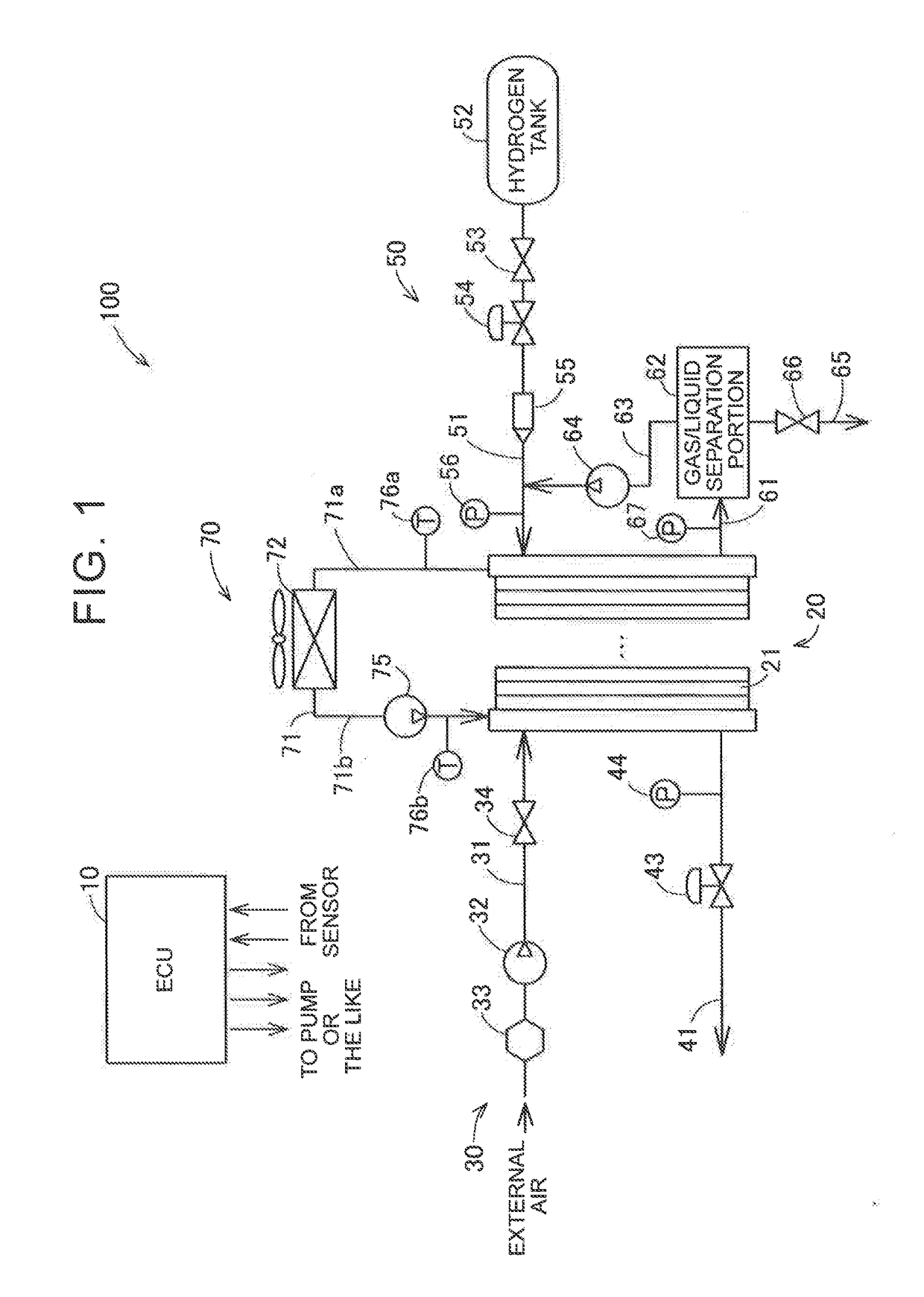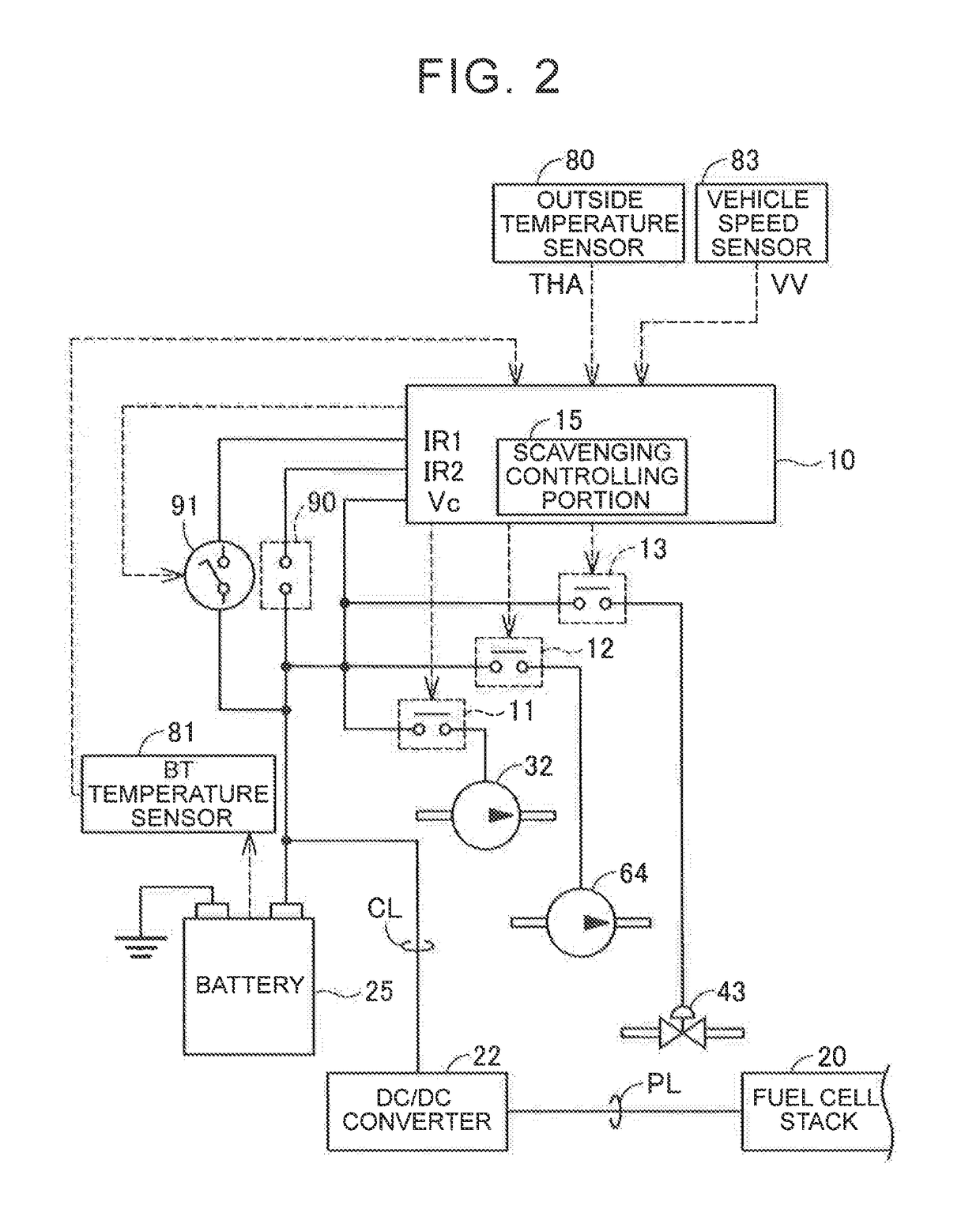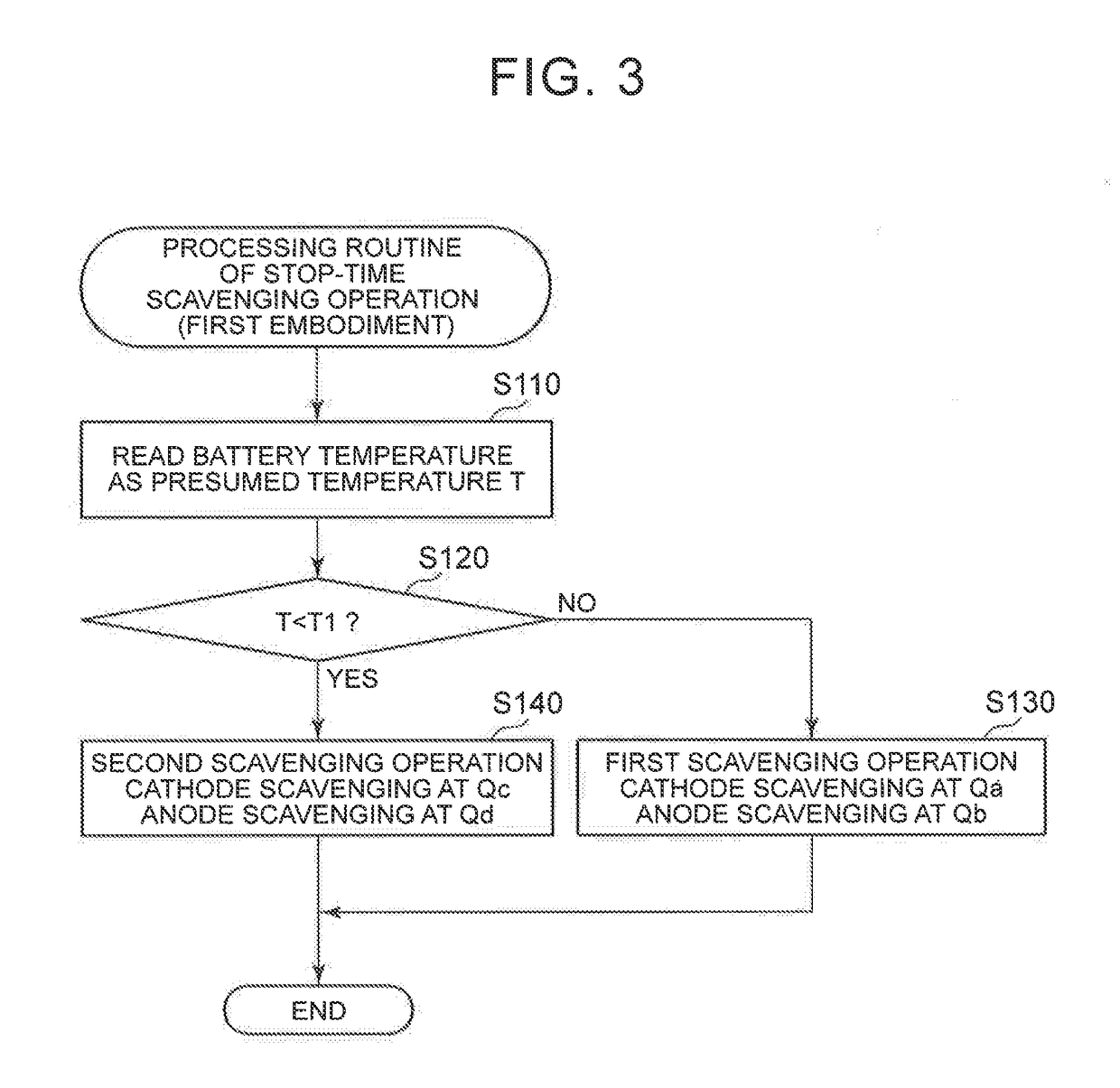Fuel cell system and scavenging method of fuel cell
a fuel cell and scavenging technology, applied in the direction of fuel cell control, transportation hydrogen technology, electric generators, etc., can solve the problems of battery deterioration due to discharge, increase the risk of battery damage, and reduce the possibility of impairing reliability and durability of the battery. , the effect of deterioration of the battery
- Summary
- Abstract
- Description
- Claims
- Application Information
AI Technical Summary
Benefits of technology
Problems solved by technology
Method used
Image
Examples
first embodiment
[0063] described above, the fuel cell system 100 performs the stop-time scavenging operation at the time when the operation of the fuel cell stack 20 is stopped, and when the presumed temperature T that the temperature of the battery 25 is presumed to reach at the time when the fuel cell stack 20 is stopped is less than the predetermined temperature T1, the second scavenging operation having a high scavenging ability is performed as compared with a case where the presumed temperature T is the predetermined temperature T1 or more. Accordingly, at the time of the stop of the fuel cell stack 20, strong scavenging is performed so as to completely drain off the moisture content of the fuel cell stack 20, its peripheral duct, the pump, or the like. Accordingly, it is not necessary to perform scavenging by use of the battery 25 in a state where the presumed temperature T of the battery 25 becomes less than the predetermined temperature T1 during the stop of the fuel cell stack 20 and disch...
second embodiment
[0066]In the fuel cell system 100 a process of setting a parking timer 91 (step S150) is performed following a process of a first scavenging operation (step S130). This process is a process in which the parking timer 91 is turned on a predetermined time later after the fuel cell stack 20 is stopped, and the parking timer 91 is set to start an ECU 10. The predetermined time is five hours, for example.
[0067]In the meantime, when a second scavenging operation (step S140) is performed, a process of stopping the parking timer 91 or maintaining the stop thereof is performed after that (step S160). As a result, the parking timer 91 enters a stop state, so that a function to start the ECU 10 after the predetermined time does not work.
[0068]Thus, by the processing routine of the stop-time scavenging operation, when it is determined that a presumed temperature T of a battery 25 is a predetermined temperature T1 or more, the parking timer 91 is set after the first scavenging operation. Accord...
third embodiment
[0074]in the fuel cell system 100 when a start switch 90 is turned on, a winter determination processing routine illustrated in FIG. 7 is repeatedly executed at a predetermined interval. When the process is started, it is first determined whether or not a winter determination ON condition is established (step S310). The winter determination ON condition in this embodiment means that either of the following conditions is satisfied: (a) a state where an outside temperature THA detected by an outside temperature sensor 80 is −10° C. or less continues for three seconds or more; and (b) a history that a parking scavenging operation is performed is left in a storage device of an ECU 10. If either of the conditions is satisfied, it is determined that the winter determination ON condition is satisfied, and the processing routine shifts to step S320, in which a winter determination flag FW is set to a value 1. The winter determination flag FW is stored in the storage device of the ECU 10.
[0...
PUM
| Property | Measurement | Unit |
|---|---|---|
| temperature T1 | aaaaa | aaaaa |
| temperature | aaaaa | aaaaa |
| time | aaaaa | aaaaa |
Abstract
Description
Claims
Application Information
 Login to View More
Login to View More - R&D
- Intellectual Property
- Life Sciences
- Materials
- Tech Scout
- Unparalleled Data Quality
- Higher Quality Content
- 60% Fewer Hallucinations
Browse by: Latest US Patents, China's latest patents, Technical Efficacy Thesaurus, Application Domain, Technology Topic, Popular Technical Reports.
© 2025 PatSnap. All rights reserved.Legal|Privacy policy|Modern Slavery Act Transparency Statement|Sitemap|About US| Contact US: help@patsnap.com



